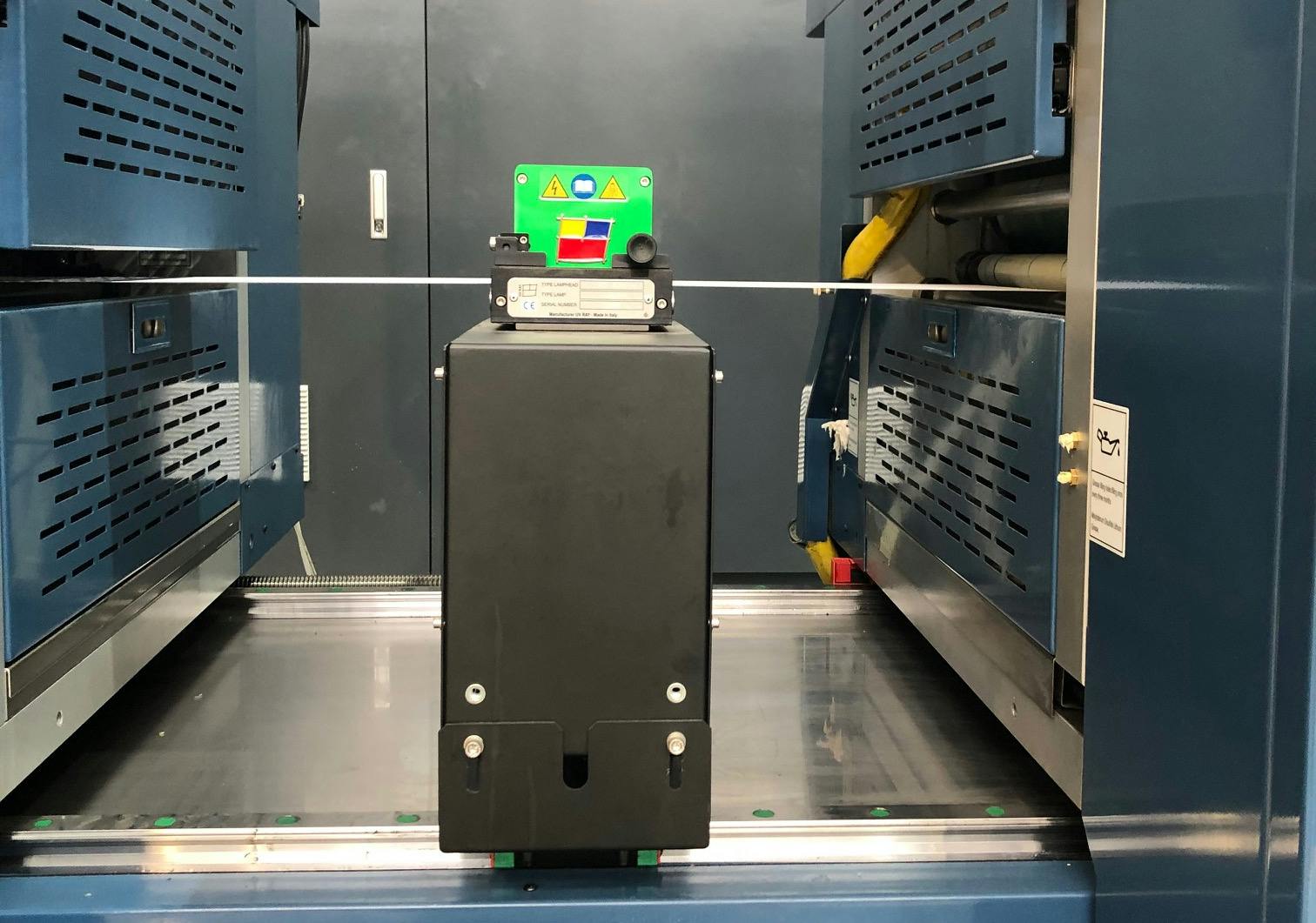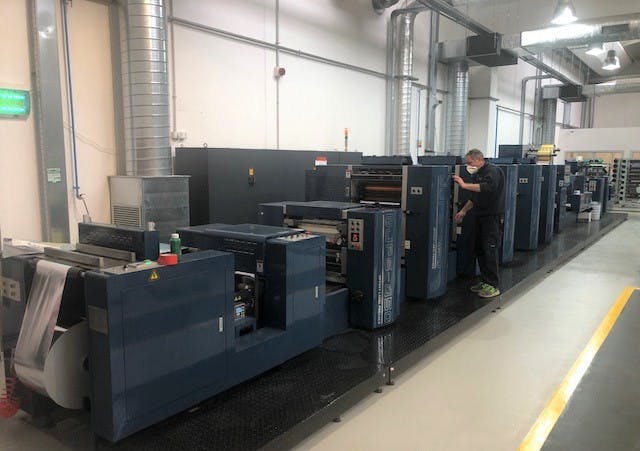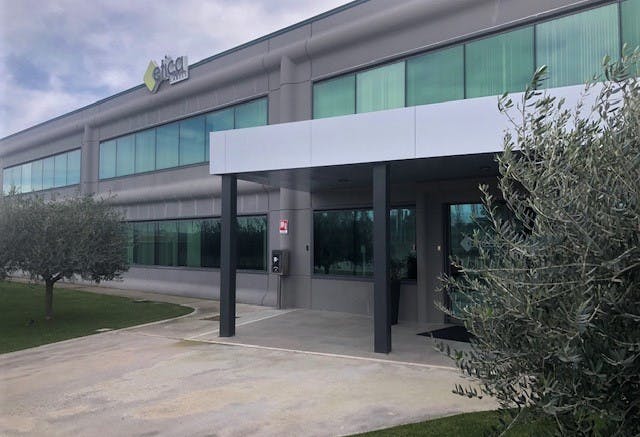A radical choice with UV LED

[Original article from MetaPrintArt translated into English]
etic.a srl of Pomezia with its latest installation of a Wanjie semi-rotary press marketed in Italy by Bama with 5 offset, 2 flexo, a screen printing unit and laminator for printing self-adhesive labels has made a radical choice by installing curing systems—all UV LED. Let's find out why, talking to Alberto Maiano of UV RAY. This is the first installation of UV RAY on a Wanjie press in Italy.
Given the need to reformulate many inks, manufacturers have moved forward with bivalent inks (traditional UV and UV LED). Alberto Maiano of UV Ray explains that today "the great curing capacity of our LEDs allows for very high performance. Plus, at etic.a they use quality inks that work even without the exclusive LED specification without any kind of curing problem."
Maiano explains that by having a very high energy reserve, etic.a srl made polymerization happen perfectly from the minimum installed power up to around 20 to 25 percent. In practical terms, this means a reduction of committed energy by about 10 times compared to a conventional 500mm UV lamp (0.5kW compared to at least 5 kW using 100W/cm).
All this translates into low temperature on the substrate, less stress on the material, no color fading, and the ability to print on any type of film material combined with water-based inks while maintaining a stable temperature on the material.
"By installing all LEDs," adds Alberto Maiano, "etic.a has taken a leap into the future and has made it possible to greatly simplify all processing by avoiding a series of problems objectively always present on semi-rotary presses, but which are not encountered with the LED system, such as short passes with high repetitions, full sheets over the entire web, and the possibility of printing narrower webs without problems on the register due to heat or the non-uniformity of the heat itself between the operator side and the machine side."
With this machine supplied by BAMA and equipped with UVLED drying systems, Etica intends to print on even heat-sensitive plastic films, achieving quality and high value-added jobs.
"All these processes are thus made much easier, cheaper, and faster ."
Machine features
The Wanjie semi-rotary press has a maximum printing width of 430mm, including the varnish unit, flexo unit and 5 offset units (all with LED systems), a laminating unit on which a conventional UV system has been mounted, a screen printing unit, and an additional flexo unit at the output.
Alberto Maiano summarizes the advantages of this configuration as follows.
"The real limitations of flatbed semi-rotary presses whether offset, letterpress, or flatbed screen printing, had as the last insurmountable barrier the limitation of UV performance in order to make a quantum leap in every respect. Economical as in total energy savings resulting in lower cost per label. Of zero energy loss startup, because the LED remains off during pulse cycle phases. No color fading even on repeats, which allows for consistent uniformity and total process repeatability without any guesswork. No deformation of the material due to UV, as the minimal heat emitted is dissipated through the cooled plate and allows for perfect registration even on narrow web widths and solid substrates."
Plus it reduces the complexity of the work: "no 'tricks' to get the work out," Maiano claims, "just set the power."
As a result, there are no extra costs from the low-end label to the top of the range, very low operating cost without spare parts, and with timeless longevity: the life of the LED module is still given to have 70 percent of the output after 20,000 hours of operation, "but with such use we are faced with absolutely minimal power used, which will increase its life by leaps and bounds ."
We then ask Gianni Olivieri co-owner with Patrizia Windfang of etic.a what results he has achieved through replacing traditional lamps with UV Lamps on the Wangjie semi-rotary press.
"Granted that throughout our company," Olivieri answers, "we have replaced on all the traditional machines, excluding digital of course, the mercury lamps with UV LED lamps. There are three reasons why: the first is to create a comfortable environment in production by cutting down the noise because the exhaust fans are the cause of a significant noise, while today the production floor feels like being in an office. The second motivation is environmental because we want to help reduce the hole in the ozone layer, because as we know UV mercury lamps emit ozone; so by replacing all the lamps with UV LED we have an environmentally sustainable company. And this is a very important point for us!
"The third reason," adds Gianni Olivieri, "is the reduction of electricity consumption because considering 100 percent absorption of a label factory, 60 percent is given by UV lamps, while with UV LED lamps I therefore reduce energy consumption, for the lamps, from 80 to 90%. And also this in addition to confirming our focus on environmental sustainability is very relevant during big electricity price increases."
And why did you choose UV Ray as the supplier of these UV LED lamps ?
"It was a natural choice, because the supplier has been in an association with UV Ray for some time now, and so I preferred to stick with the choice recommended by the manufacturer. The collaboration between Bama and UV Ray is now proven and gives me confidence."

